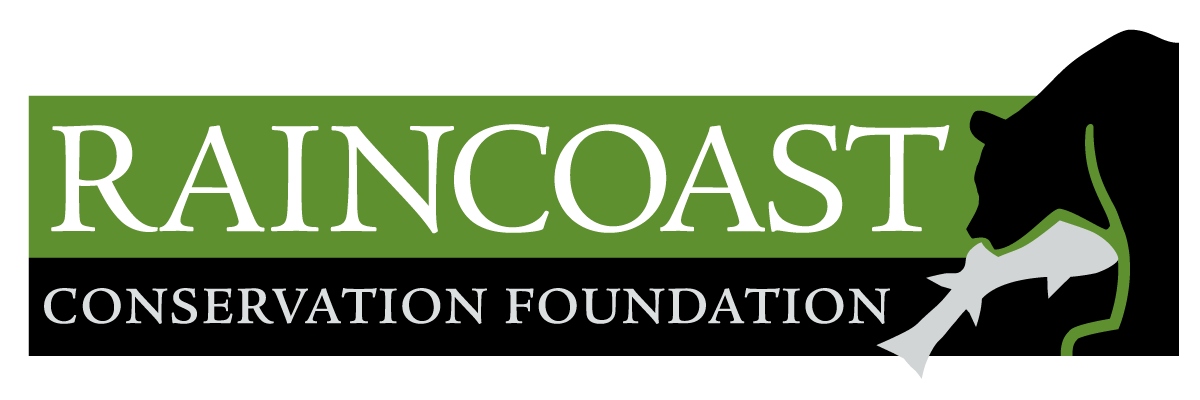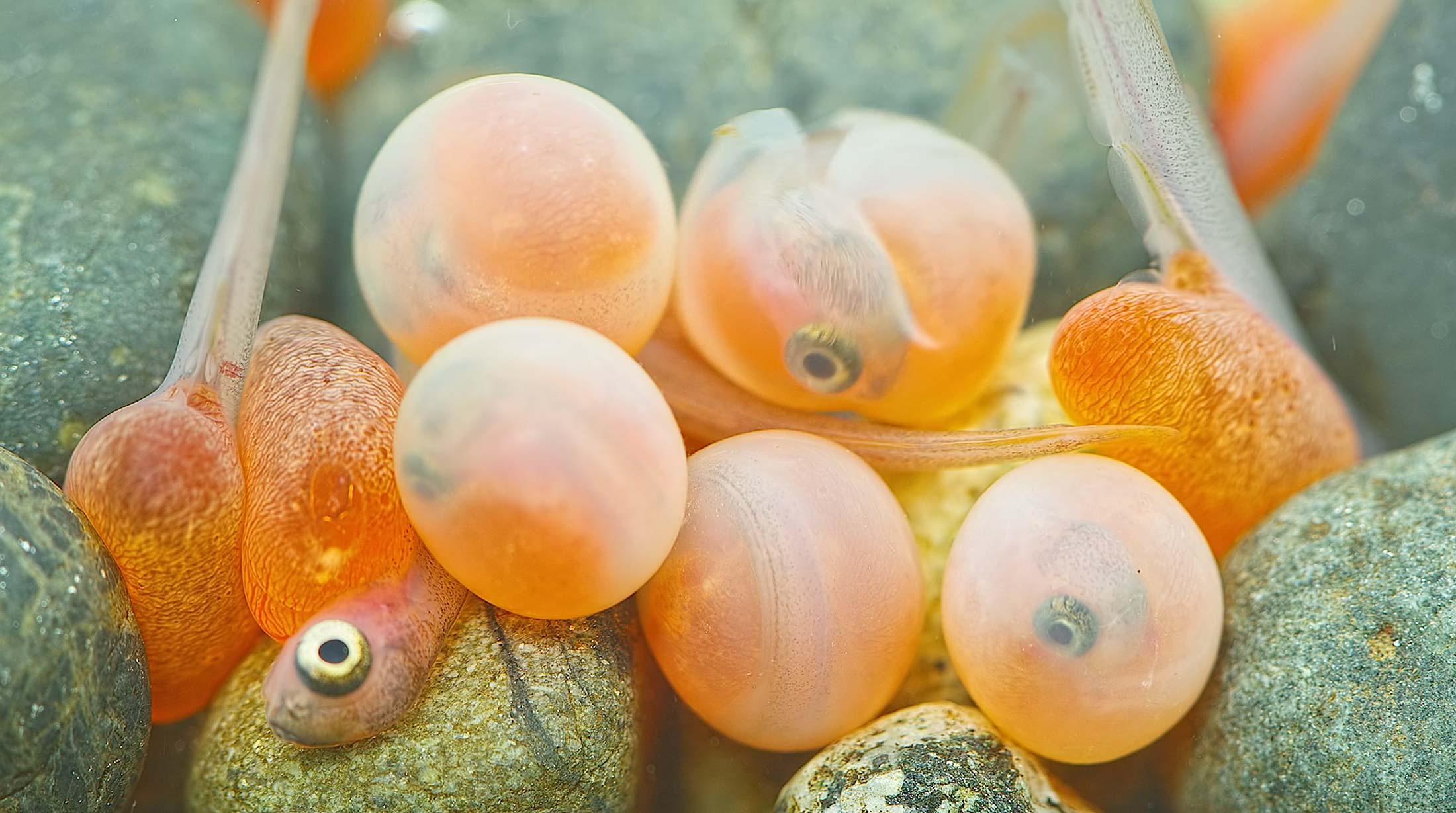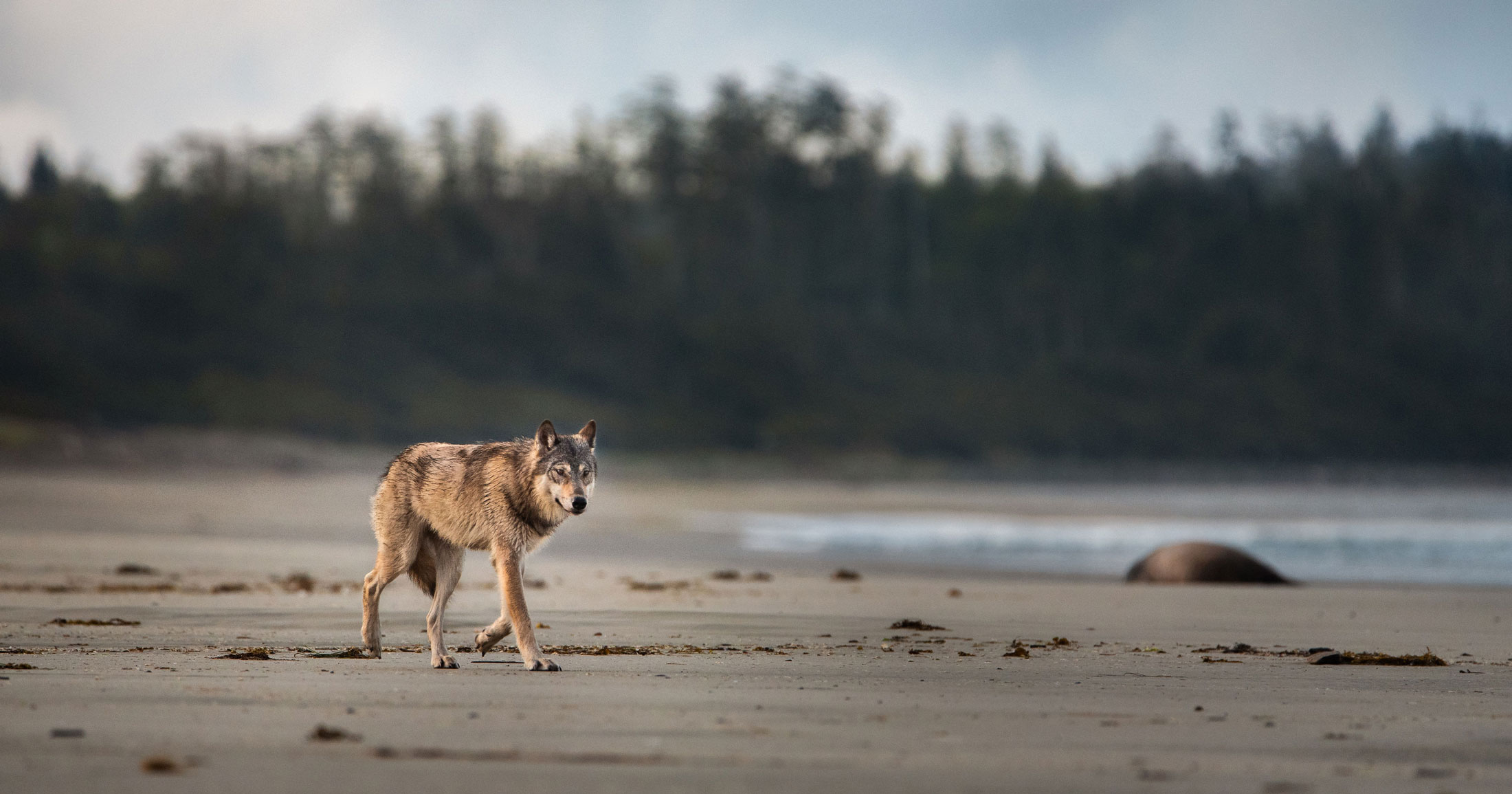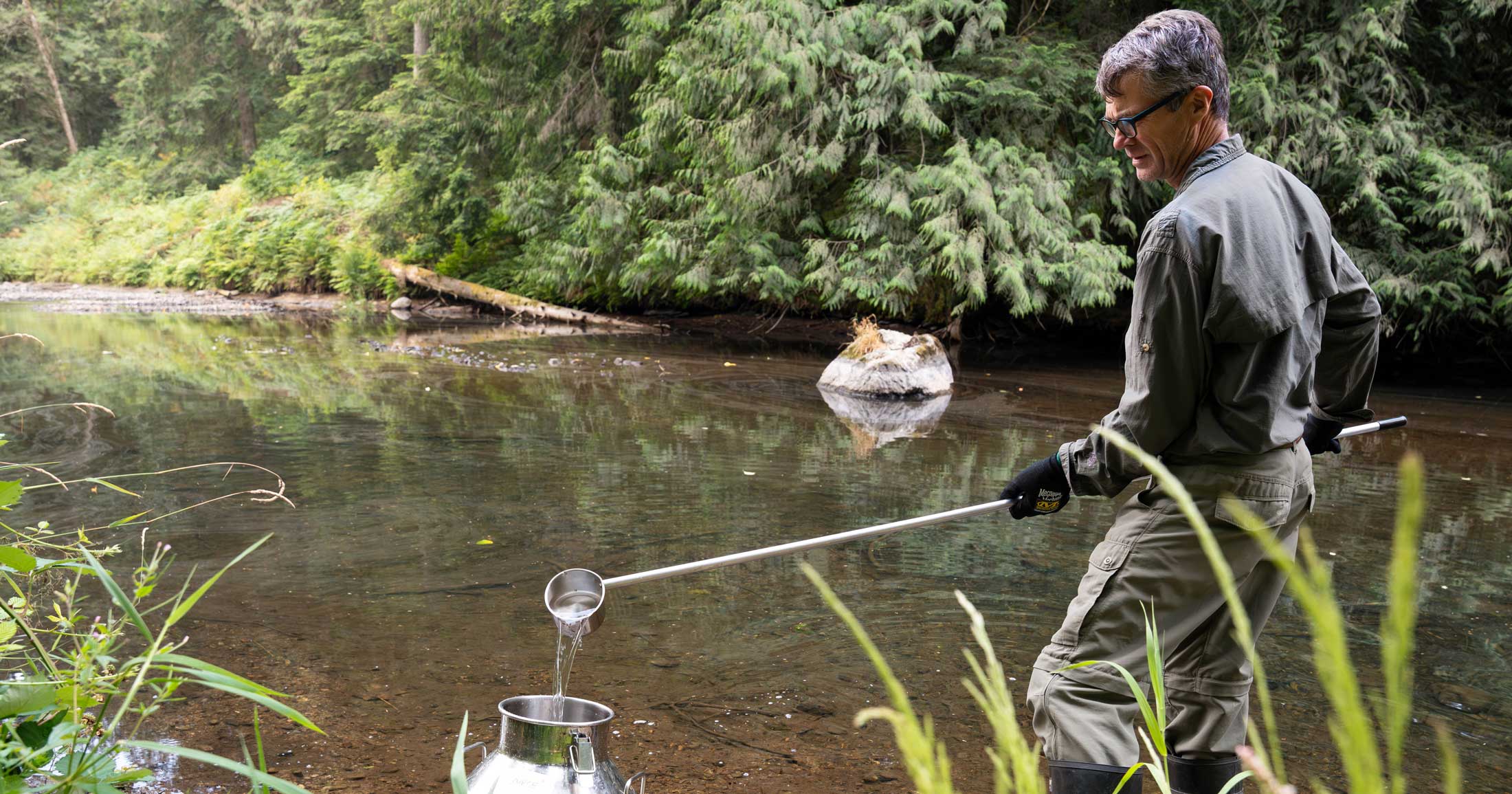Researching the biology, ecology and behavior of whales, dolphins and porpoises.
Photo by Lance Barrett-Lennard / Ocean Wise.
Canada is home to nearly 30 marine mammal species. The majority of these cetaceans (porpoises, dolphins, and whales), were historically supported by abundant and diverse fish prey living in largely undisturbed offshore and coastal habitats. Sadly, many of these iconic species – considered by scientists to be indicators of ecosystem health – are at risk as a result of historical harvesting, a legacy of industrial pollution, reductions in their prey, and underwater noise and disturbance.
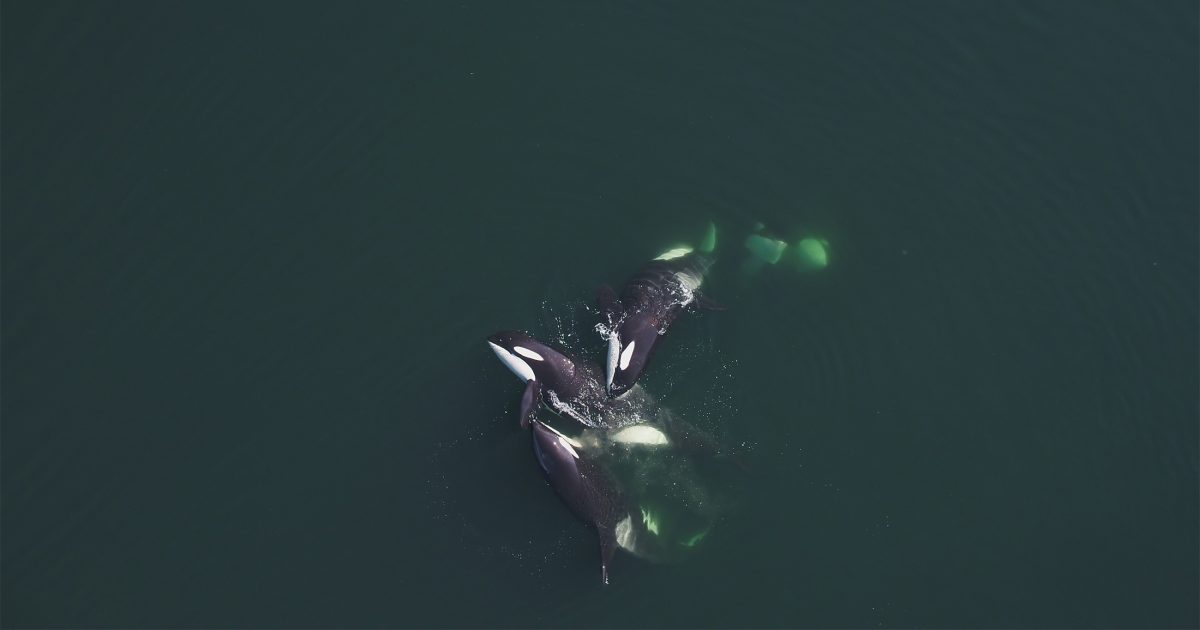

Indicators of ecosystem health
The Cetacean Conservation Research Program studies the biology, ecology, and behavior of cetaceans through various projects helping us address and answer questions that illuminate both their susceptibility and their resilience to anthropogenic threats, and that contribute to the development and assessment of mitigation efforts.
At the top of the food chain, cetaceans are often keystone species, making them a good indicator of ecosystem health. Long term studies of cetaceans offer the unique opportunity to track individuals over time, which enables us to gain a deeper understanding of population health, social systems, and life history traits.
Research to inform change
Our Cetacean Conservation Research Program fills a niche that complements the capacities, strengths of academic, ENGO, and government research programs in British Columbia and Canada, and collaborates with them as much as possible. We recognize the value of combining knowledge, skills, capacities, resources, and experiences of multiple parties when conducting field research and interpreting data. Our team includes both experienced senior scientists with a long view of conservation and research, and younger scientists with cutting edge technical skills.
Photo by Lance Barrett-Lennard / Ocean Wise (SARA permitted).

Southern Resident killer whale recovery
For more than a decade, Raincoast has been using science, public education, and the courts to protect Canada’s endangered population of salmon-eating killer whales. With their Chinook salmon stocks in serious decline and targeted by fisheries, and a noisy and polluted ocean, they face extinction under existing conditions.
This declining population of 73 animals (Fall 2022) has very low birth rates and premature deaths of adult whales. The birth of recent calves offers hope, but threats that impede their successful feeding and access to Chinook must be addressed for calves to survive and population recovery to occur. The good news is they can recover if these conditions are reversed. However, proposed cure-alls like more hatchery salmon and killing seals have little scientific basis.
NoiseTracker
To better understand the coastal acoustic environment and impacts of human-produced noise on marine species, our team launched NoiseTracker — an initiative originally aimed at developing a coast-wide noise monitoring platform. Today, NoiseTracker has evolved into a focused research program conducting localized analyses of underwater noise to inform conservation efforts, particularly for endangered species like Southern Resident killer whales.
Listening to whales
Cetaceans use sound for nearly every aspect of their lives: to communicate, maintain contact, attract mates, navigate, detect prey, and avoid predators. Not only is this fact fundamental in terms of evaluating the effects of underwater noise pollution on these marine mammals, but it is also a key consideration when designing methods to monitor their populations effectively. Our Cetacean Conservation Research Program studies various aspects of cetacean acoustics, informing both noise mitigation measures and population monitoring.


Beluga whales: a sound centered species in today’s noisy world
The beluga acoustic research project aims to deepen our understanding of beluga vocalizations and impacts of noise and disturbance on beluga communication and behavior. Our recent study showed that masking of the quiet calls of newborn belugas by noise can impair mother-calf contact. We work primarily in the St Lawrence River Estuary, Quebec, in close collaboration with the Group for Research and Education on Marine Mammals (GREMM) and the University of Quebec. Our studies involve the synchronization of underwater recordings and drone footage. This ability to pair simultaneous aerial imagery and underwater acoustic data is an innovative marriage of technologies that can shed light on beluga communication and behavior with an unprecedented level of detail. We have evaluated the potential impacts of using drones to study beluga whales and other cetaceans, and published a paper outlining recommendations to minimize disturbance.
Recent articles
Episode 13: Careers in conservation with Jason Hwang, Pacific Salmon Foundation
How to navigate the waters of the environmental job market.
Shared Waters of the Salish Sea
The films and panel at the Vic Theatre in mid…
A window for survival: Act now to protect Chinook and save Southern Residents
A ‘’whale safe” window can help this endangered population.
Episode 12: Enriching relationships with watersheds and people, with Redd Fish Restoration Society’s Jessica Hutchinson
How process restoration is banishing band-aid solutions (and commitment issues).
Together, let’s rewrite the story of wolves in BC
Protecting wolves is about more than one species—it’s about protecting…
What is a watershed?
How can we use the movement of water through the…
Help us keep our programs moving forward, uninterrupted
Why monthly giving is crucial for long-term conservation success.
Episode 11: Communicating the “why care?”, the importance of listening and community empowerment with Tom Rutherford
“My theory is there’s not enough of us who are…
